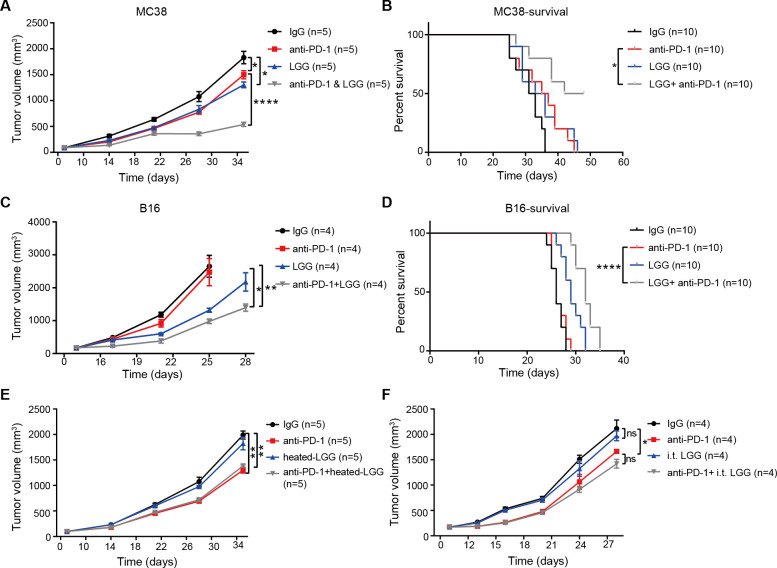Figure 1.
Oral administration of live Lactobacillus rhamnosus GG (LGG) improves the response to anti-programmed cell death 1 (PD-1) in melanoma and colon cancer mouse models. (A–F) C57BL/6 mice were subcutaneously inoculated with MC38 cells (A, B, E and F) or B16F10 cells (C and D). When tumour volumes reached approximately 100 mm3, tumours received respective treatments as indicated. (A) Tumour volume of MC38 tumour bearing-mice treated with IgG control antibody, anti-PD-1 antibody, oral administration of live LGG (2×109 CFU) or combined LGG and anti-PD-1 antibody (n=5). (B) Survival curves for each treatment group in (A); log-rank (Mantel-Cox) test survival comparison. (C) Tumour volumes of B16 tumour bearing-mice treated with IgG control antibody, anti-PD-1 antibody, oral administration of live LGG or combined LGG and anti-PD-1 antibody (n=4). (D) Survival curves for each treatment group as (C); log-rank (Mantel-Cox) test survival comparison (B and D). *p<0.05; ****p<0.0001. (E) Tumour volume of MC38 tumour bearing-mice treated with IgG control antibody, anti-PD-1 antibody, oral administration of heated-LGG or combined heated-LGG and anti-PD-1 antibody (n=5). (F) Tumour volumes of MC38 tumour bearing-mice treated with IgG control antibody, anti-PD-1 antibody, intratumoural of live LGG (2×107 CFU) or combined intratumoural of live LGG and anti-PD-1 antibody (n=5). Tumour volumes were measured and plotted individually. (A, C, E and F) Data are expressed as mean±SEM Tumour volume results were analysed by using two-way analysis of variance; *p<0.05; **p<0.01; ****p<0.0001.

